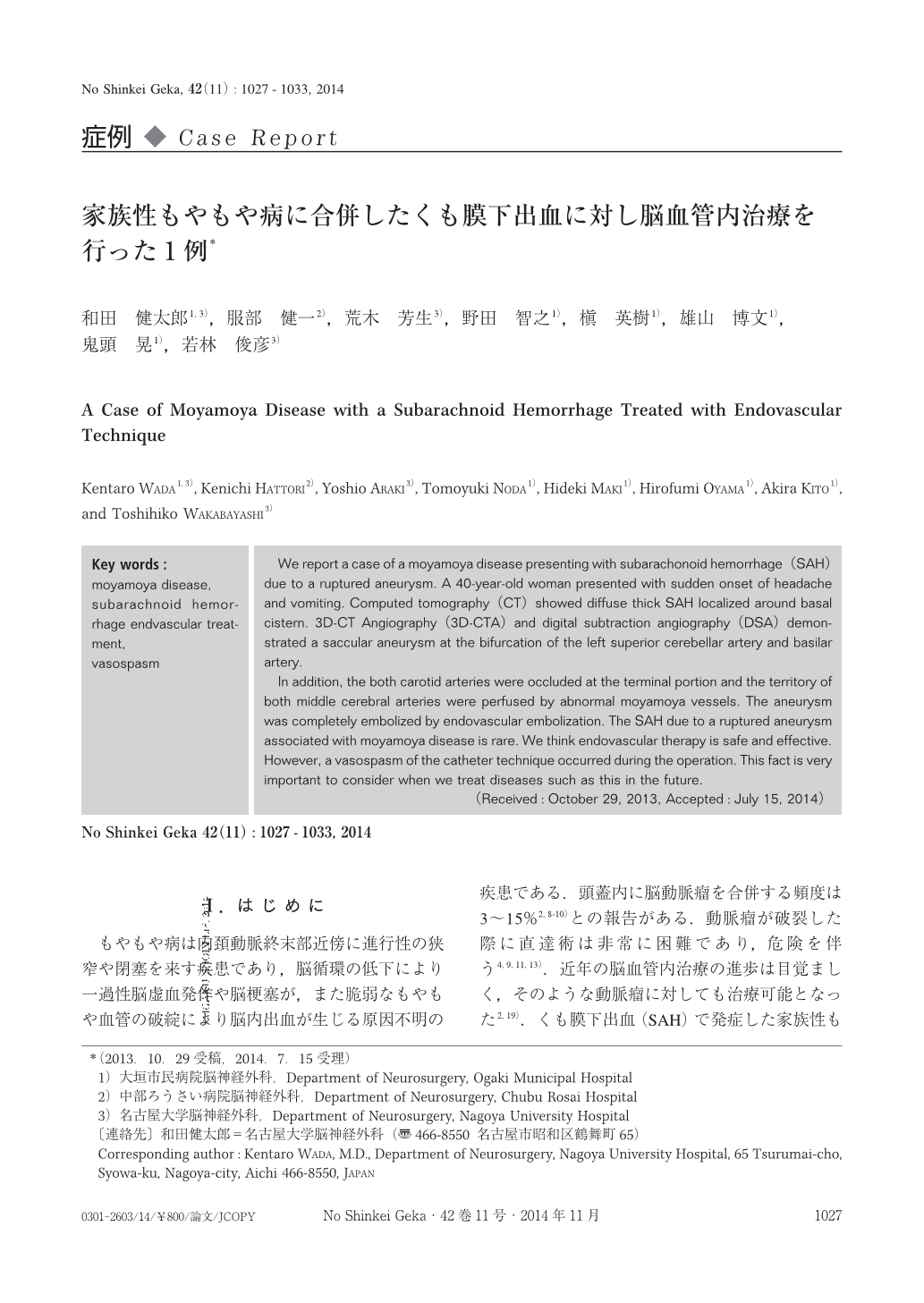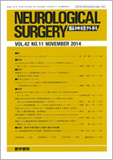Japanese
English
- 有料閲覧
- Abstract 文献概要
- 1ページ目 Look Inside
- 参考文献 Reference
Ⅰ.はじめに
もやもや病は内頚動脈終末部近傍に進行性の狭窄や閉塞を来す疾患であり,脳循環の低下により一過性脳虚血発作や脳梗塞が,また脆弱なもやもや血管の破綻により脳内出血が生じる原因不明の疾患である.頭蓋内に脳動脈瘤を合併する頻度は3〜15%2,8-10)との報告がある.動脈瘤が破裂した際に直達術は非常に困難であり,危険を伴う4,9,11,13).近年の脳血管内治療の進歩は目覚ましく,そのような動脈瘤に対しても治療可能となった2,19).くも膜下出血(SAH)で発症した家族性もやもや病に合併した破裂脳動脈瘤に対する治療を報告した例は稀である.われわれは治療法に対する問題点と周術期管理について考察を加え,報告する.
We report a case of a moyamoya disease presenting with subarachonoid hemorrhage(SAH)due to a ruptured aneurysm. A 40-year-old woman presented with sudden onset of headache and vomiting. Computed tomography(CT)showed diffuse thick SAH localized around basal cistern. 3D-CT Angiography(3D-CTA)and digital subtraction angiography(DSA)demonstrated a saccular aneurysm at the bifurcation of the left superior cerebellar artery and basilar artery.
In addition, the both carotid arteries were occluded at the terminal portion and the territory of both middle cerebral arteries were perfused by abnormal moyamoya vessels. The aneurysm was completely embolized by endovascular embolization. The SAH due to a ruptured aneurysm associated with moyamoya disease is rare. We think endovascular therapy is safe and effective. However, a vasospasm of the catheter technique occurred during the operation. This fact is very important to consider when we treat diseases such as this in the future.

Copyright © 2014, Igaku-Shoin Ltd. All rights reserved.


